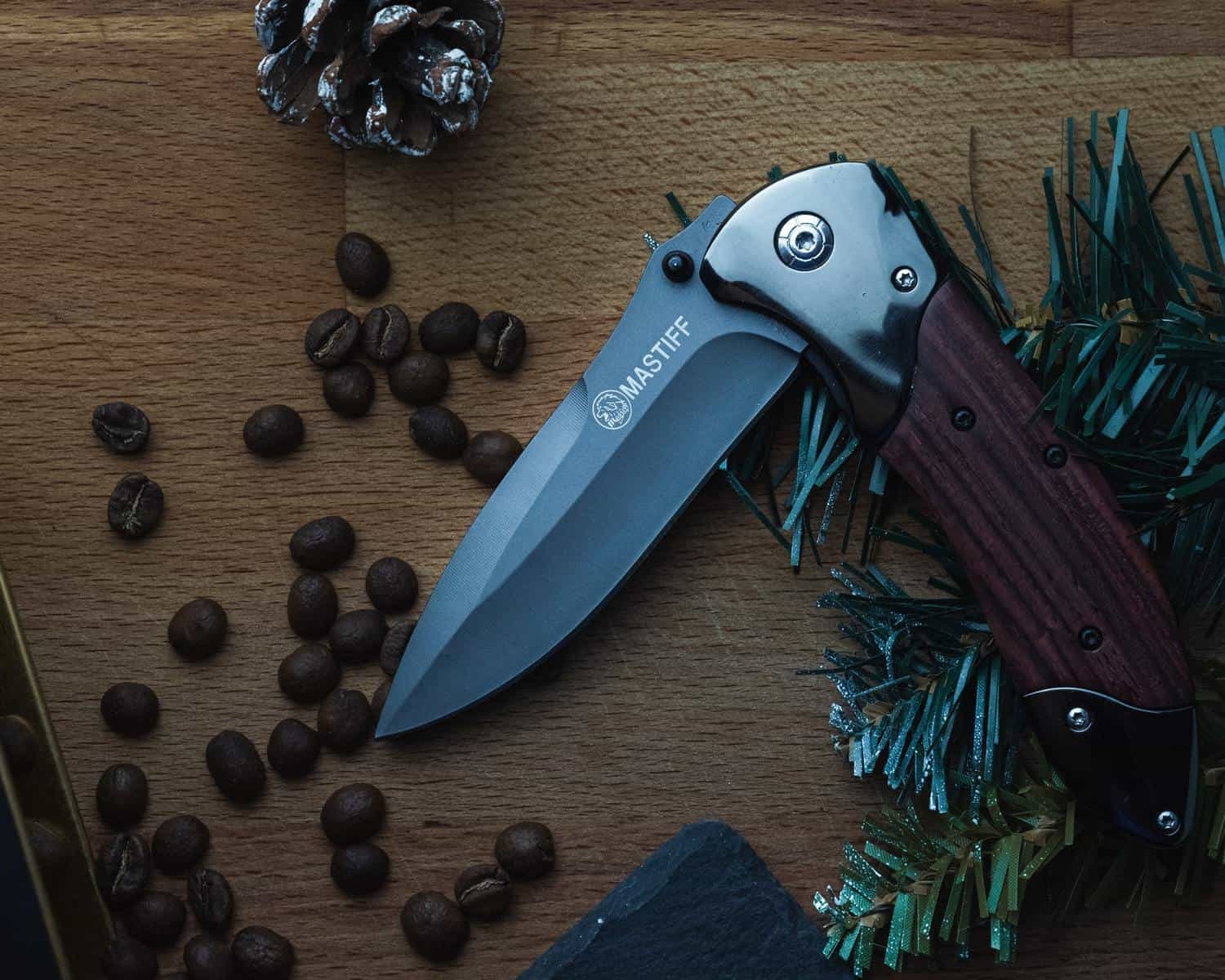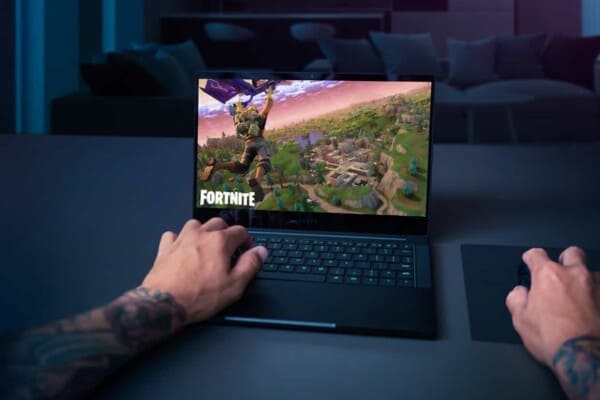
An everyday carry (EDC) knife is a simple cutting tool designed for a huge range of situations and applications. By definition, they’re designed for you to carry them daily as another convenient item in your pocket, bag, or utility belt. Carry it around the same way you would your phone, flashlight, pen, or keys.
Ideally though, an EDC knife needs to be:
- Lightweight for convenient carrying
- Compact to fit in your pocket
- Durable to withstand frequent use
- Safe to handle
- Capable of cutting through various materials
Fortunately, it’s easier than ever to find a reliable EDC knife that suits your lifestyle, hobbies, and work. There are plenty of options to choose from, with the most advanced designs incorporating features and materials for improved convenience and safety.
Today’s most innovative EDC knives are easier and safer to use than traditional ones. With these EDC folding knives, you can expect a modernized version that reduces your risk of injuries, thanks to the smaller, safer blade. Here are some of the top features to look for when shopping for a new EDC knife.
Spring-Assist Deployment

An EDC knife with a button-activated, spring-assist deployment releases the blade when you need to cut, so you don’t need to put your fingers near it (though the rounded tip is reasonably harmless to fingers anyway). Tap the button to release the blade instantly.
That makes for quicker, easier, safer blade release than traditional folding knives offer. It can save valuable time in an emergency, too, when every second counts.
Ambidextrous Design

An ambidextrous design is a fantastic feature if you’re left-handed, or someone else likely to use it is a leftie too. Using a knife designed for right-handed users can be frustrating for left-handed people. It may be difficult to find a left-handed knife that suits your needs, includes the right features, and offers a comfortable grip. You may feel that you need to settle for second best rather than getting one you really want.
It also impairs the safety and effectiveness of the knife. You might struggle to get a secure grip on the handle if it doesn’t fit right in your hand. That can make it harder to cut accurately and affect the quality of your handiwork (whether you’re crafting for fun or slicing materials in the workplace).
Fortunately, an ambidextrous knife lets you switch the blade’s orientation easily so it works best for you. You can also save money on buying multiple knives to suit others in your household or workplace; share an ambidextrous knife between all of you instead. Just make sure everyone knows how to reorient the blade for left- and right-handed use.
Robust Handle with Locking Liner

Your knife should feel solid and comfortable in your hand for the best cuts. But it should also be sturdy enough to withstand friction if it rubs up against other items in your pocket or backpack, or it happens to fall out of one of the two.
The last thing you need in a first-aid situation is for your knife to break apart if it slips between your fingers. That’s why a good, strong handle is a must. Aim for one made from metal for durability you can trust. Make sure it has a locking liner too. That’ll keep the blade from retracting while you use it.
A lanyard hole is another valuable feature in a knife: You can carry it around your neck or belt hook, so it’s always within reach when you need it. That’s helpful if you can’t fit it into your pocket or are prone to misplacing your tools. You can also attach a lanyard to hang the knife from a wall-mounted hook, the corner of a desk, or anywhere else that’s convenient.
No-Tool Blade Change

You’ll need to change even the strongest blade sometime. That may not seem like a big deal if you’re a seasoned knife handler. But it can still be a hassle if you need tools to open the handle and retrieve the blade. You could cut yourself, too, if it’s tricky to pull the used one free and insert the replacement.
A knife featuring no-tool blade change makes this process simpler and safer. If you carry a replacement blade with you, you can insert it in the field without needing to keep a suitable tool handy.
Changing the blade should be as simple as pushing a button to release it, removing the used one, and inserting a fresh blade. You can make the switch and get cutting again in seconds.
Rust-Free Blade

Rust ruins metal blades over time. That’s down to exposure to water and oxygen; they trigger a chemical reaction and render your knife ineffective as it gets more advanced.
Zirconium oxide blades are a robust alternative to metal, and it’s chemically inert so it never rusts. You can wash the blade repeatedly without damaging it, which is ideal if you tend to cut materials covered in glue or paint. And it helps if you use your knife to trim dirty firewood or juicy fruit. Zirconium oxide’s strength and rust-free nature makes it a logical choice for any EDC knife.
Here’s another advantage of zirconium oxide: It lasts up to 11.2 times longer. That means better value for money and fewer blade changes for added safety.
So, we’ve established what an EDC knife is, but where and why do you need to carry one?
Where and Why an EDC Knife Can Help You

EDC knives are an ideal tool for many situations you may find yourself in from time to time, whether you’re on an adventure, relaxing at home, or hard at work. Here are six examples to illustrate why you should carry an EDC pocket knife:
Cutting Materials in Emergency Situations
A quality EDC knife could be vital if you need to cut through clothing, straps, or even seatbelts in an emergency. For example, if you’re involved in a road traffic accident and can’t unbuckle your seatbelt, having easy access to a knife could help you escape the vehicle safely.
Building a Fire in the Great Outdoors

According to National Geographic, wandering off the trail and a lack of preparation are two of the most common problems people experience while hiking.
Preparation is crucial to stay safe during long hikes, and that includes carrying gear you may need if you get lost and need to stay in the wilderness overnight. Extra clothes and flashlights are a big help, but a good EDC knife will help you gather wood to make a fire.
Thicker branches may be too strong to snap off a tree by hand, but a sturdy knife should slice through them easily. You can also strip the bark from damp branches to produce more effective kindling in wet weather.
Performing First Aid
You can use an EDC knife to cut bandages or gauze to size when a wound needs to be dressed. Scissors may not be included in a first aid kit, or could be too ineffective on thicker materials.
And a strong blade can cut through clothing when you need to access a wound to apply a dressing or disinfect a laceration. It’s faster and safer than trying to remove garments by hand.
Stripping Electrical Cable Covers

Removing a cable’s outer protective layer allows you to access the components underneath and investigate issues or make repairs. You can use a knife to strip a cover effectively, but make sure your EDC knife has a non-conductive blade to increase your safety.
You should only do this if you know what you’re doing and follow all necessary precautions.
Opening Sealed Parcels
Opening packages can be tricky without a quality knife. You might use a pair of standard household scissors to slice through paper packaging and tape, but these can be imprecise and may be damaged if packaging is thick enough. And a lack of accuracy creates the risk of damaging the goods inside too.
Your handy EDC knife will cut through most packaging materials and tape with greater precision than other, clumsier sharp objects you might have to handle.

Cutting Materials When Crafting
A versatile blade is a must for crafting, whatever your discipline. You can use an EDC knife for slicing paper, cutting cardboard, trimming clay, shaving wood, or resizing textiles.
Aim for a chemically inert blade that never rusts to keep your knife in its best condition for longer. That’s crucial when you need to rinse the blade dozens of times each day.
Conclusion
Do any of these examples sound like something you could use an EDC knife for? From everyday tasks to emergencies, these little tools can make your daily needs much easier.
Take your time to find a well-designed knife that offers user-friendly, safe performance. Investing in a high-quality EDC knife ensures you always have access to a trustworthy cutting tool when you need one.












